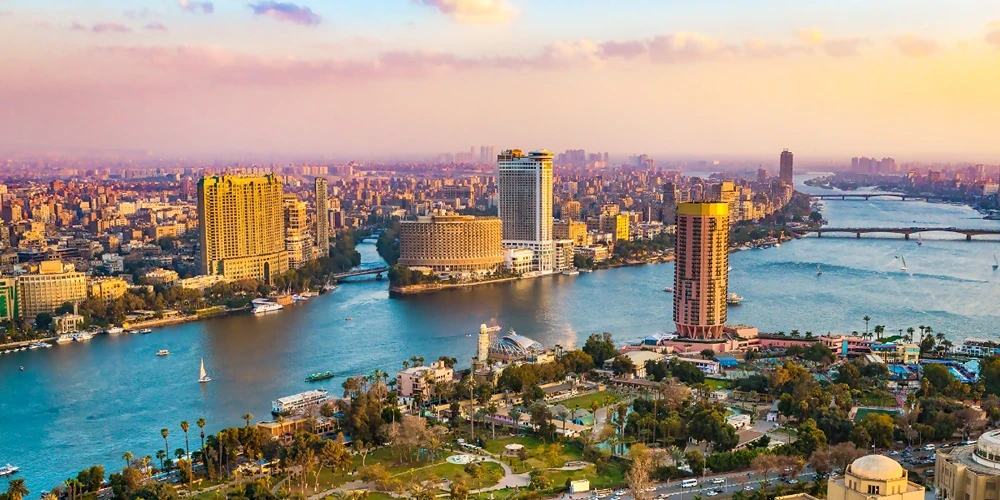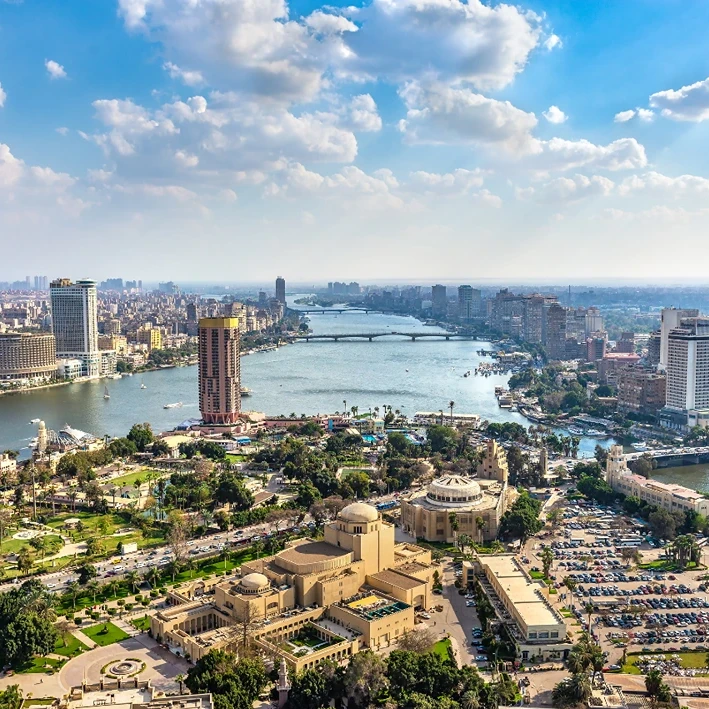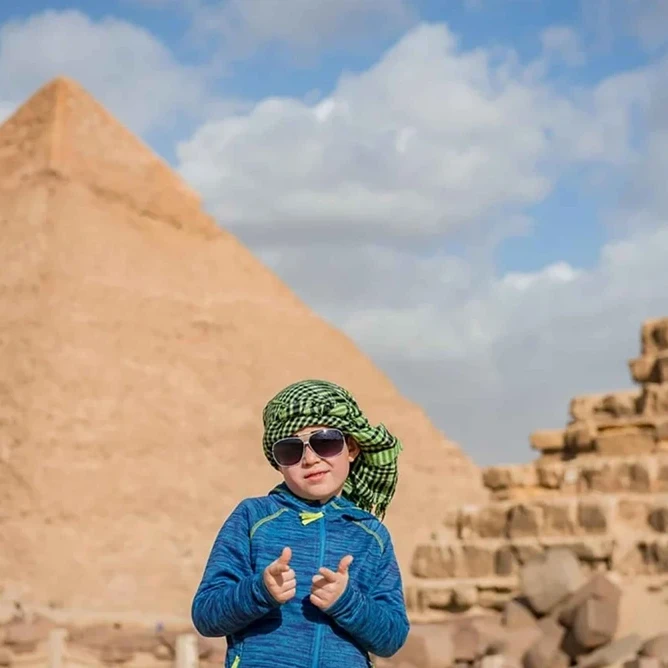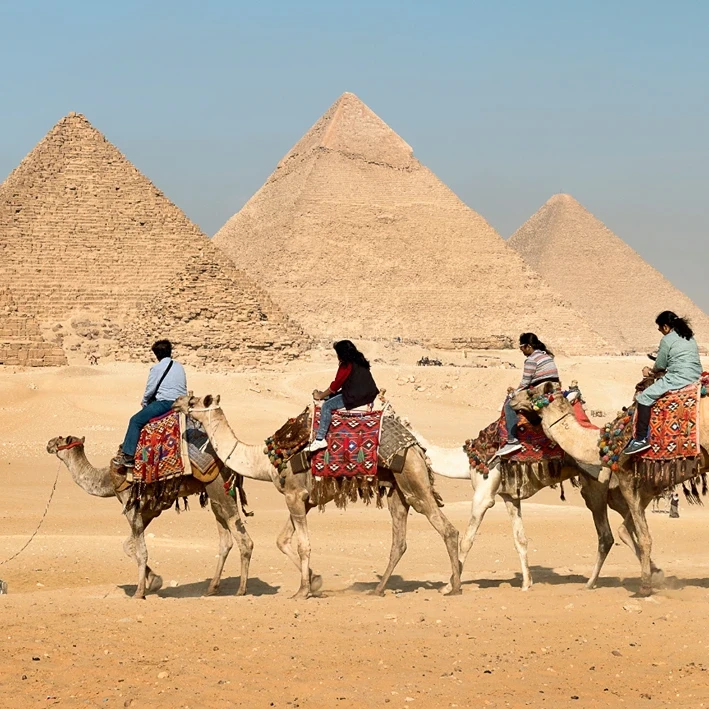Ready to explore one of the world’s most fascinating destinations? Egypt, a land of timeless wonders and modern marvels, offers a travel experience unlike any other. Whether you’re an avid history buff or a curious traveler, Egypt has something to captivate your interest. From iconic landmarks like the Pyramids of Giza to the bustling streets of Cairo, our guide covers the best places to visit in Egypt. Embark on this journey through legendary temples, serene oases, and stunning coastal resorts. To make the most of your visit, it’s essential to know the best time to travel to Egypt. The climate can vary significantly depending on the season, with cooler months from October to April being ideal for exploring outdoor attractions. Planning your trip during these months ensures a more comfortable experience as you uncover Egypt’s rich history and natural beauty.
Table of Contents
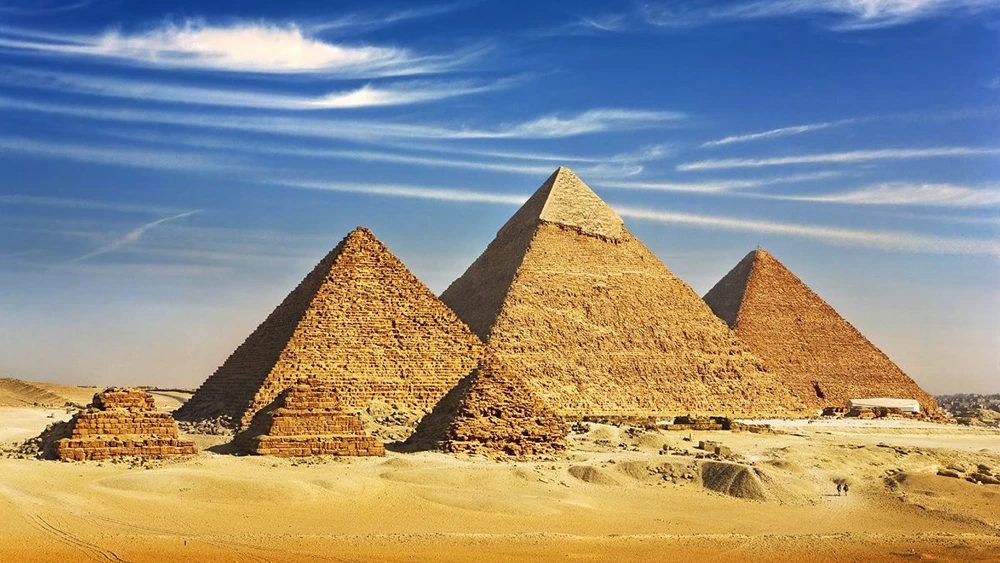
The Pyramids of Giza: Egypt’s Iconic Landmark
The Pyramids of Giza are among Egypt’s most famous landmarks and a must-see for any traveler. Situated just outside Cairo, this ancient site includes the Great Pyramid of Khufu, the Pyramid of Khafre, and the Pyramid of Menkaure. These monumental structures have stood the test of time, symbolizing Egypt’s rich history and architectural prowess.
The Great Pyramid of Khufu, also known as the Pyramid of Cheops, is the largest and oldest of the three, built around 2580-2560 BC. It was originally 481 feet tall and remains one of the Seven Wonders of the Ancient World. The Pyramid of Khafre, slightly smaller but still impressive, appears taller due to its elevated location and retains some of its original casing stones at the top. The smallest of the trio, the Pyramid of Menkaure, is distinguished by its more modest scale and the surrounding smaller pyramids, known as the Queens’ Pyramids. The Sphinx, a colossal limestone statue with the body of a lion and the head of a pharaoh, stands guard over these pyramids, adding an extra layer of mystique to the site.
For those planning to visit, it’s recommended to arrive early to avoid the midday heat and crowds. The site opens from 8 AM to 5 PM, with extended hours during the summer. Several guided tours are available, offering in-depth historical insights and convenient transportation. Don’t miss the opportunity to explore the interior of the Great Pyramid and capture stunning photos of the Sphinx at sunset.
Exploring Luxor: The Ancient Thebes
Luxor, often referred to as the world’s greatest open-air museum, was Egypt’s cultural and political hub during the New Kingdom. It is home to some of the most significant historic monuments, making it a must-see destination for history enthusiasts.
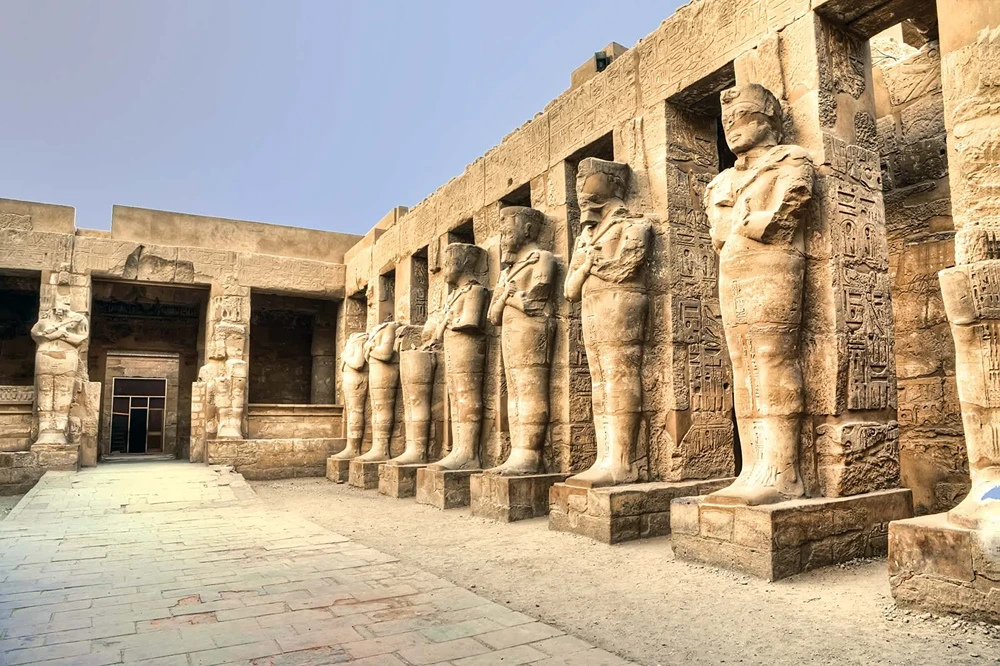
Karnak Temple Complex
The Karnak Temple Complex is one of the largest religious buildings ever constructed. Spanning over 200 acres, it features a vast array of temples, chapels, and other structures. It was primarily dedicated to the Theban triad of Amun, Mut, and Khonsu. The Hypostyle Hall, with its 134 massive columns, stands out as a testament to ancient Egyptian architectural prowess.
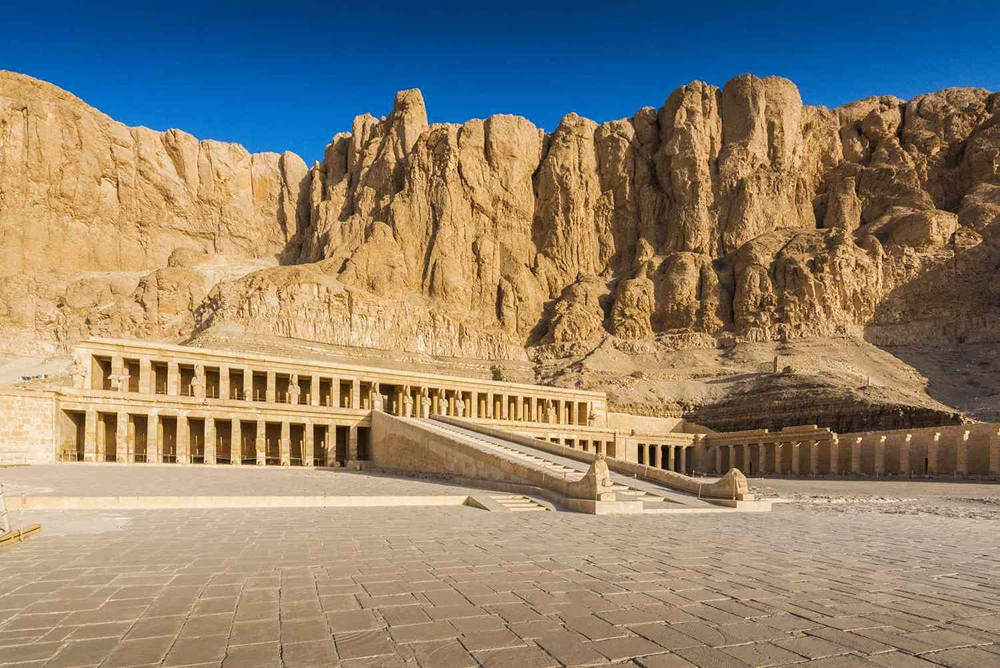
Valley of the Kings
The Valley of the Kings served as the royal burial ground for pharaohs and powerful nobles of the New Kingdom. Located on the west bank of the Nile, it houses over 60 tombs, including the famous tomb of Tutankhamun. The intricate wall paintings and hieroglyphs inside these tombs offer a glimpse into ancient Egyptian beliefs and art.
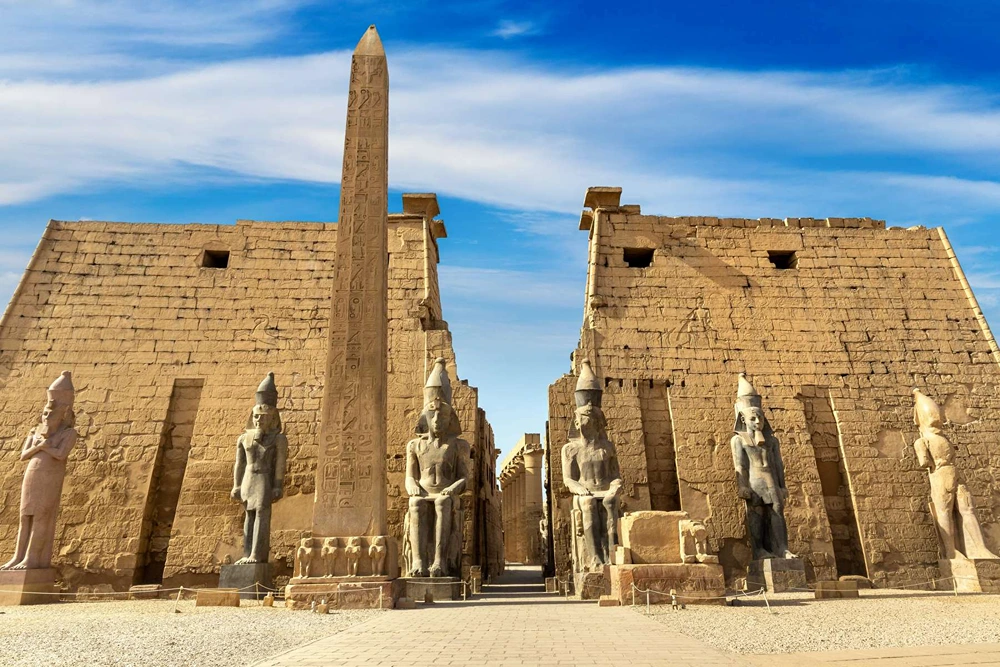
Luxor Temple
Luxor Temple is a striking example of ancient Egyptian architecture. Built primarily by Amenhotep III and Ramses II, it was dedicated to the rejuvenation of kingship. The temple’s grand entrance, flanked by massive statues and obelisks, leads to a series of courtyards, halls, and sanctuaries. Its location along the Nile adds to its scenic beauty. When planning your trip, it’s important to consider the money and costs for Egypt. Understanding the expenses associated with travel, accommodation, and attractions can help you budget effectively and make the most of your visit. From affordable local eateries to luxury hotels, Egypt offers a range of options to suit different budgets, ensuring a memorable experience without breaking the bank.
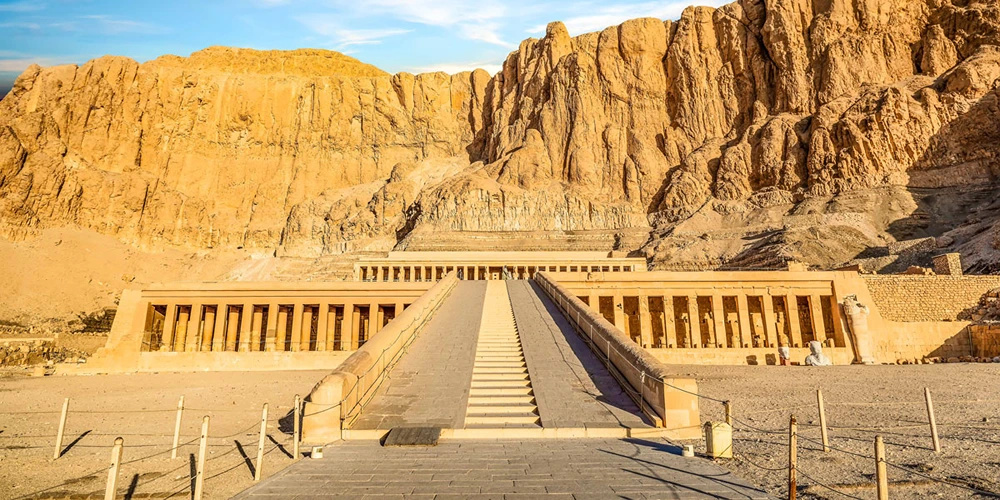
Hatshepsut Temple
The Hatshepsut Temple, also known as Deir el-Bahari, is a mortuary temple built for Queen Hatshepsut. Its unique design features terraces that blend seamlessly into the surrounding cliffs. This architectural marvel was intended to honor Hatshepsut and ensure her legacy for eternity.
| Attraction | Highlights |
|---|---|
| Karnak Temple Complex | Vast size, Hypostyle Hall |
| Valley of the Kings | Tombs of famous pharaohs, intricate wall paintings |
| Luxor Temple | Grand entrance, architectural beauty |
| Hatshepsut Temple | Terrace design, Queen Hatshepsut’s legacy |
Discovering Cairo: Egypt’s Vibrant Capital
Cairo, Egypt’s sprawling capital, is a city that blends rich history with vibrant culture. It offers a mix of ancient landmarks and modern attractions, making it a must-visit destination. The Egyptian Museum, Khan El-Khalili Bazaar, and Coptic Cairo are among the top attractions that showcase the city’s diverse heritage. Additionally, Cairo is known for its lively nightlife and a wide array of dining options, reflecting its cosmopolitan nature.
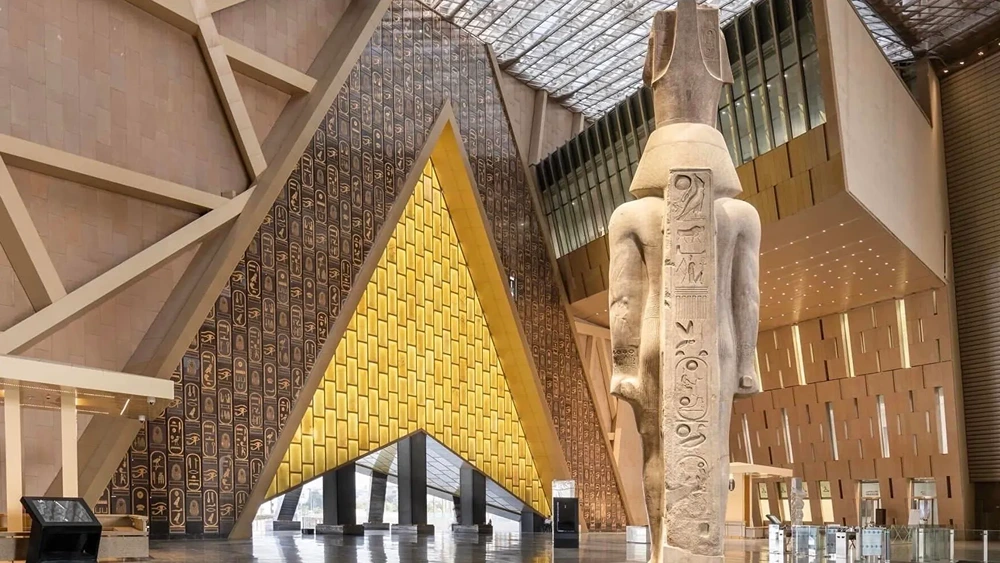
The Egyptian Museum
The Egyptian Museum is a treasure trove of ancient artifacts, housing over 120,000 items. One of the most famous collections is the artifacts from King Tutankhamun’s tomb, including the iconic golden mask. The museum also features statues, mummies, and extensive displays of jewelry and everyday items from ancient Egypt. Visiting the Egyptian Museum offers a comprehensive look into Egypt’s long and storied past.
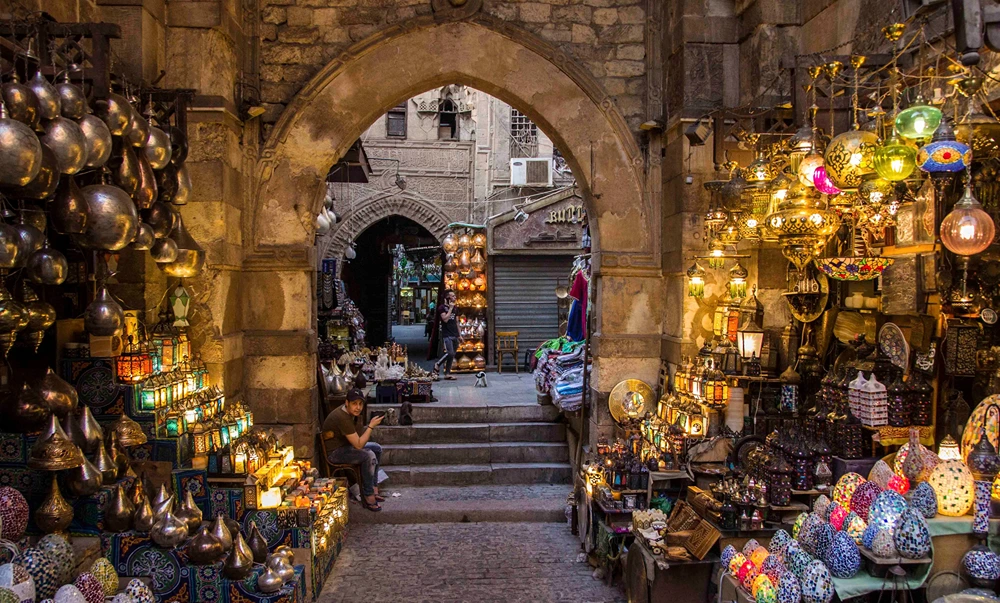
Khan El-Khalili Bazaar
Khan El-Khalili Bazaar is one of Cairo’s most historic and bustling marketplaces. Established in the 14th century, this bazaar offers a labyrinth of narrow streets filled with shops selling spices, jewelry, textiles, and traditional crafts. Visitors can expect to experience the vibrant atmosphere, haggle for souvenirs, and enjoy local delicacies at the numerous cafes and eateries. The bazaar’s historical significance and lively ambiance make it a memorable part of any visit to Cairo.
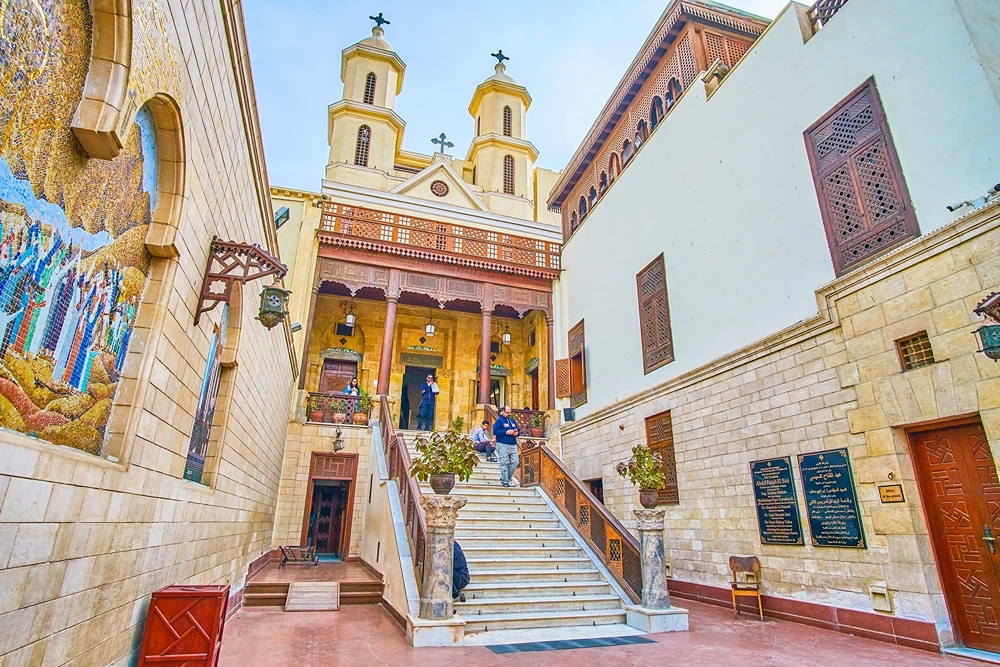
Coptic Cairo
Coptic Cairo is an area rich in Christian history and home to some of the city’s oldest religious sites. Key attractions include the Hanging Church, known for its unique suspended nave, and the Coptic Museum, which houses a vast collection of Christian artifacts. The area also includes the Ben Ezra Synagogue and the Church of St. Sergius and Bacchus, believed to be a refuge for the Holy Family. Exploring Coptic Cairo provides insight into the city’s diverse religious heritage.
For those planning to explore Cairo, it’s advisable to start early to avoid the midday heat and crowds. Guided tours are available for major attractions, offering in-depth historical insights and convenient transportation. In the evening, visitors can enjoy the city’s vibrant nightlife, from bustling markets to upscale rooftop bars. Before you travel, make sure to check the visa requirements for Egypt. Depending on your nationality, you may need to apply for a visa in advance or obtain one upon arrival. Ensuring you have the correct documentation will help you avoid any travel disruptions and allow you to fully enjoy your Egyptian adventure. Dining options are plentiful, ranging from traditional Egyptian cuisine to international dishes, ensuring a flavorful culinary journey.
The Wonders of Aswan: A Serene Escape
Aswan, located in southern Egypt, is known for its serene atmosphere and historical significance. Unlike the bustling cities of Luxor and Cairo, Aswan offers a more relaxed experience, making it an ideal destination for those looking to unwind while exploring ancient wonders. The city is home to several notable attractions, including the Philae Temple, Nubian Museum, and the Unfinished Obelisk. Its picturesque setting along the Nile River adds to its charm, providing a scenic backdrop for a peaceful getaway.
- Philae Temple: This ancient temple dedicated to the goddess Isis showcases stunning architecture and intricate carvings. It was relocated to Agilkia Island to save it from flooding caused by the Aswan High Dam.
- Nubian Museum: This museum offers a rich collection of artifacts that highlight the history and culture of the Nubian people. It provides an in-depth look at the heritage and contributions of this unique community.
- Unfinished Obelisk: One of Aswan’s most intriguing sites, this massive obelisk remains in its original quarry, offering insights into ancient Egyptian stone-working techniques.
- Aswan High Dam: An engineering marvel, the dam controls the annual flooding of the Nile and provides hydroelectric power to the region. It also created Lake Nasser, one of the world’s largest artificial lakes.
- Elephantine Island: This island is home to ancient ruins, a museum, and traditional Nubian villages, making it a must-visit for history enthusiasts and cultural explorers.
For those planning to visit, Aswan offers several convenient travel options, including guided tours and Nile River cruises. The best time to visit is during the cooler months from October to April. A Nile cruise is highly recommended, providing a unique perspective of the river and its surrounding landscapes. Additionally, visitors can explore the vibrant local markets, sample traditional Nubian cuisine, and enjoy leisurely felucca rides on the Nile. If you’re traveling with kids in Egypt, Aswan offers family-friendly activities that cater to all ages. From educational visits to the Nubian Museum to fun-filled boat rides on the Nile, there are plenty of opportunities for children to learn and have fun. Ensuring a mix of engaging and relaxing activities can make your family trip to Egypt both enjoyable and memorable.
The Coastal Charms of Alexandria
Alexandria, a city rich in historical significance from the Hellenistic period, is a fascinating blend of ancient landmarks and modern attractions. Known for its deep-rooted history, it features notable sites such as the ancient Pharos Lighthouse and the contemporary Alexandria Library. The city also boasts scenic waterfront promenades, bustling markets, and inviting beaches, making it a top destination for travelers.
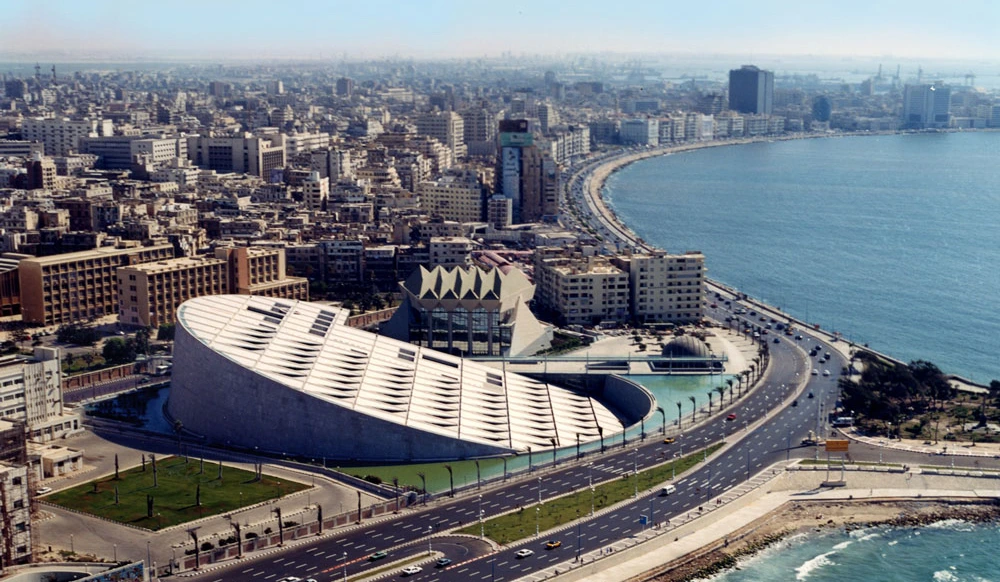
Alexandria Library
The Alexandria Library, or Bibliotheca Alexandrina, stands as a modern reincarnation of the ancient Library of Alexandria, which was one of the largest and most significant libraries of the ancient world. The new library, inaugurated in 2002, serves as a significant cultural center, housing millions of books and numerous specialized collections. It includes a planetarium, several museums, art galleries, and a manuscript restoration laboratory. This library not only preserves the ancient legacy but also promotes contemporary learning and cultural exchange.
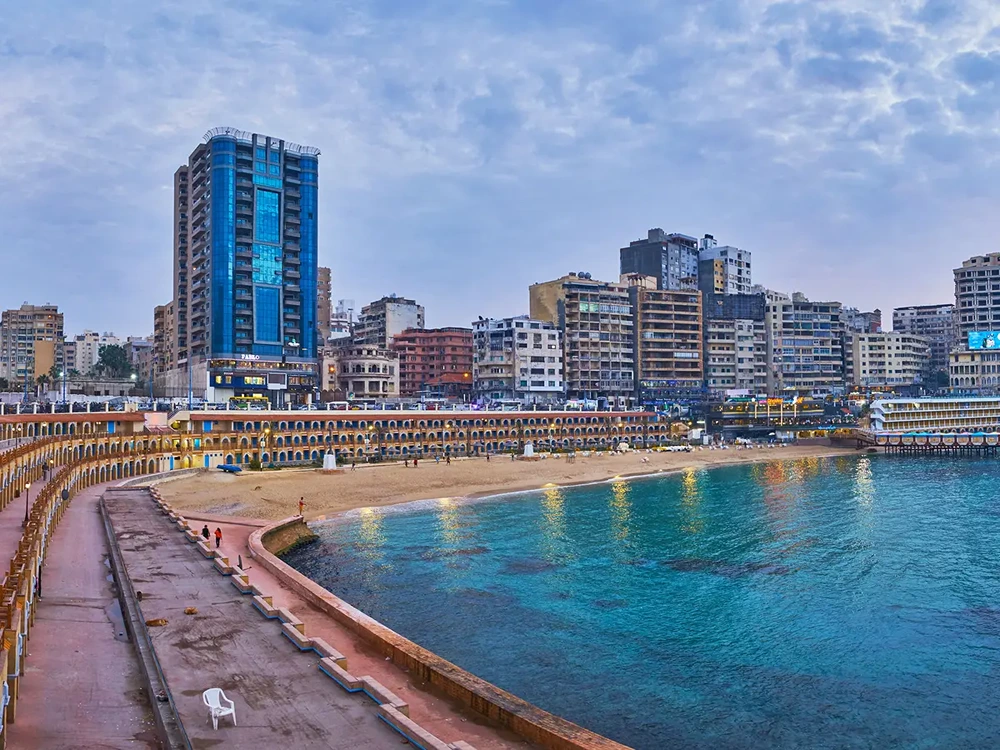
Alexandria Corniche
The Alexandria Corniche is a picturesque waterfront promenade stretching along the Mediterranean Sea. It offers stunning views, especially during sunset, and is lined with cafes, restaurants, and historic sites. Popular activities along the Corniche include leisurely strolls, enjoying local seafood, and visiting the Qaitbay Citadel, which is located at the site of the ancient Pharos Lighthouse. The Corniche provides a perfect blend of relaxation and exploration, making it a favorite spot for both locals and tourists.
For those planning to visit Alexandria, it’s recommended to explore the local markets or souks, where a variety of goods from spices to handcrafted items can be found. The best time to visit is during the cooler months from October to April. Additionally, consider taking a boat tour to appreciate the city’s coastal beauty from the sea.
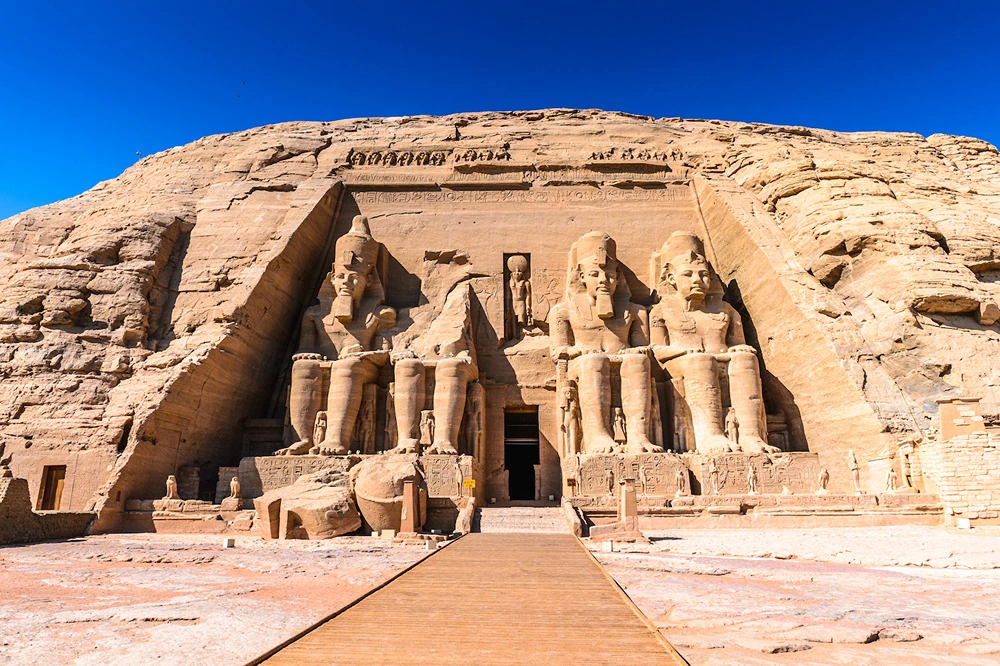
Unveiling the Mysteries of Abu Simbel
Abu Simbel Temple, carved directly out of a mountainside, dates back to the 13th century BC and stands as one of Egypt’s most iconic landmarks. Located in Aswan, this site includes two massive rock temples: the Temples of Hathor and the Great Temples of Ramses II.
The Great Temple of Ramses II is renowned for its four colossal statues of the pharaoh, each standing over 65 feet tall. These statues guard the entrance and are aligned to capture the sun’s rays twice a year, illuminating the inner sanctum. Inside, the temple walls are adorned with intricate carvings and hieroglyphs depicting Ramses II’s military victories and divine connections. The smaller Temple of Hathor, dedicated to Queen Nefertari, features six statues on its facade, with the queen standing as tall as the king, signifying her importance. Both temples were meticulously relocated in the 1960s to prevent flooding from the Aswan High Dam.
For those planning to visit, the best time to explore Abu Simbel is early morning to avoid the heat and crowds. The site is open daily from 6 AM to 5 PM, with extended hours during peak seasons. Guided tours provide valuable historical context and convenient transportation. Special events, such as the Sun Festival on February 22 and October 22, offer a unique experience when the temple’s inner sanctum is illuminated by the rising sun.
Relaxing by the Red Sea: Hurghada and Sharm el-Sheikh
The Red Sea Riviera is renowned for its stunning coastal beauty, making it a top destination for travelers seeking both relaxation and adventure. Hurghada and Sharm el-Sheikh, two of the most popular spots along this coastline, offer world-class resorts, pristine beaches, and excellent diving opportunities.
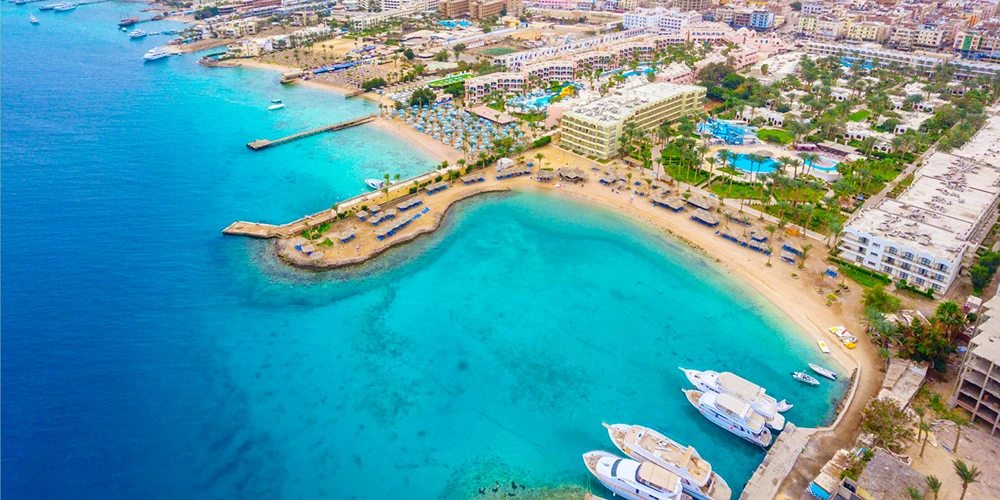
Hurghada
Hurghada is famed for its expansive beaches and vibrant resort life. The city stretches over 40 kilometers along the Red Sea coast, providing ample opportunities for sunbathing, swimming, and various water sports. Water enthusiasts can enjoy activities like snorkeling, windsurfing, and kiteboarding. The city is also a gateway to the Giftun Islands, known for their coral reefs and diverse marine life, making it a haven for divers. The bustling marina area features a mix of dining options, shops, and nightlife, ensuring that visitors have plenty to do both on and off the beach.
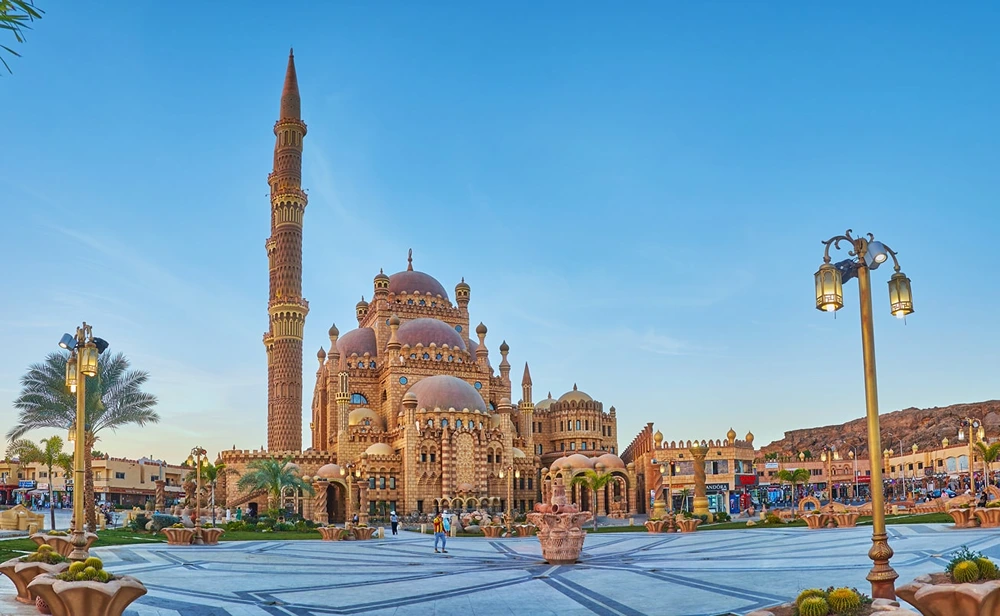
Sharm el-Sheikh
Sharm el-Sheikh is a premier diving destination, attracting divers from around the globe to explore its underwater treasures. The Ras Mohammed National Park, located at the southern tip of the Sinai Peninsula, offers some of the best diving and snorkeling spots, teeming with vibrant coral reefs and exotic marine species. Sharm el-Sheikh’s resort life is equally impressive, with luxurious hotels, spas, and private beaches providing a relaxing retreat. The city’s nightlife is lively, with a variety of bars, clubs, and entertainment venues catering to all tastes. Naama Bay, in particular, is a hotspot for nightlife, featuring a promenade lined with restaurants, cafes, and shops.
- Snorkeling and Diving: Explore the underwater world at Ras Mohammed National Park and the Giftun Islands.
- Water Sports: Engage in activities like windsurfing and kiteboarding in Hurghada.
- Relaxation: Enjoy the luxurious resorts and spas in both destinations.
- Nightlife: Experience the vibrant nightlife at Naama Bay in Sharm el-Sheikh and the marina in Hurghada.
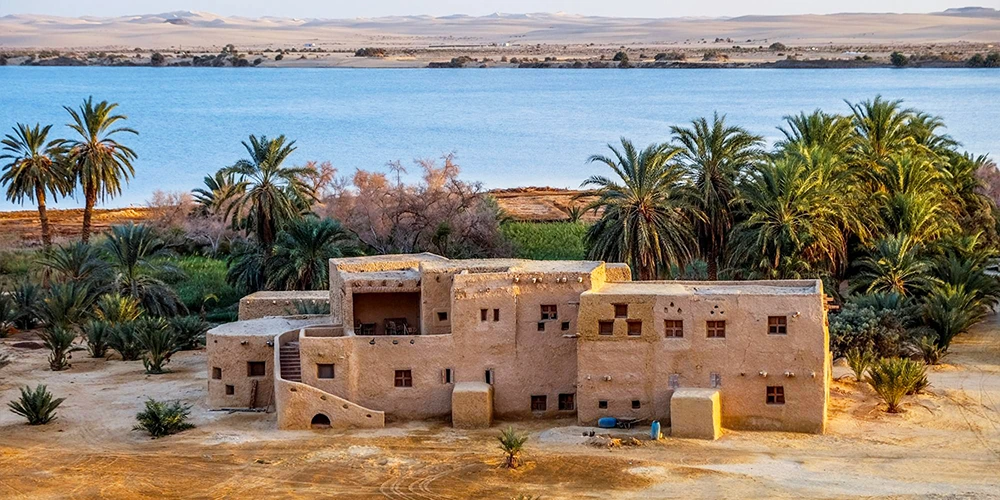
Adventure at the Siwa Oasis
Siwa Oasis, located near Egypt’s western border, is a hidden gem that offers a unique cultural and natural experience. Known for its lush palm groves and natural springs, Siwa provides a tranquil retreat from the bustling cities of Egypt.
Key attractions in Siwa Oasis include the Temple of the Oracle, the Shali Fortress, and Cleopatra’s Bath. The Temple of the Oracle, believed to date back to the 6th century BC, was once a major pilgrimage site where Alexander the Great sought guidance. The Shali Fortress, built from kershef (a mixture of salt and mud), offers panoramic views of the oasis and its surroundings. Cleopatra’s Bath, a natural spring-fed pool, is perfect for a refreshing dip and has been used since antiquity.
Visiting Siwa Oasis also offers a chance to immerse in the local Berber culture. The inhabitants speak a distinct Berber dialect and maintain traditional customs. Travel tips include exploring the oasis by bicycle or donkey cart, as these modes of transport align well with the area’s serene pace. The best time to visit is during the cooler months from October to April to fully enjoy the outdoor activities and pleasant weather.
- Temple of the Oracle
- Shali Fortress
- Cleopatra’s Bath
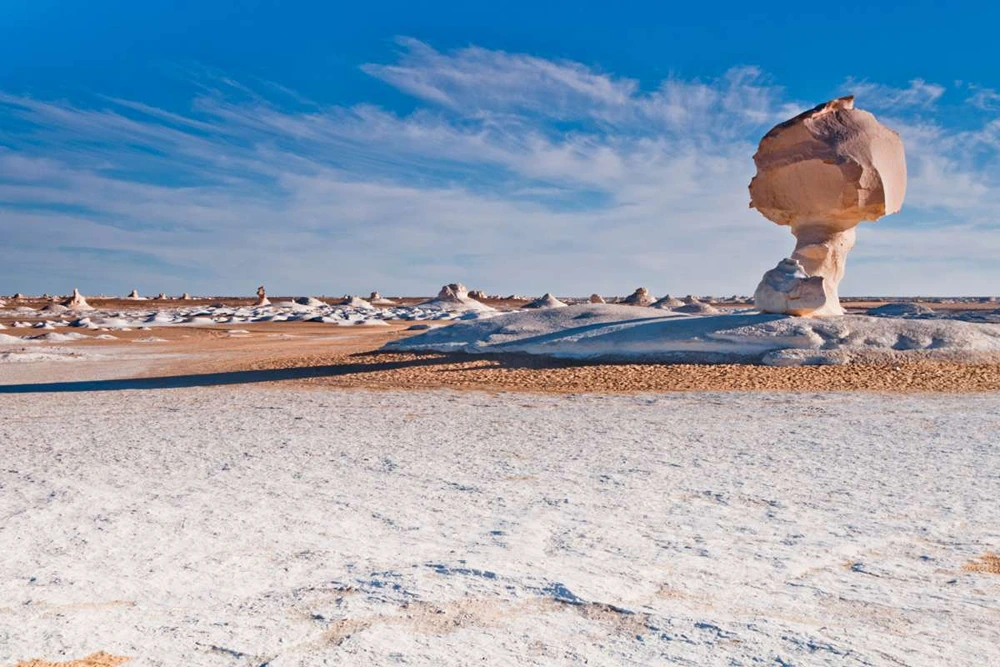
Experiencing the White Desert
The White Desert in the Farafra Oasis is one of Egypt’s most unique landscapes, featuring stunning white sand dunes and surreal rock formations. This national park offers visitors an otherworldly experience that stands apart from Egypt’s more famous historical sites. The mesmerizing scenery is the result of centuries of erosion, creating chalky formations that resemble giant mushrooms and other fantastical shapes.
- Camping: Spend a night under the stars in one of the most serene environments on Earth.
- Wildlife Spotting: Observe the desert’s unique flora and fauna, including the elusive desert fox.
- Sandboarding: Glide down the pristine white sand dunes for an exhilarating adventure.
For those planning a trip, the White Desert is best accessed from the town of Farafra, which is about a five-hour drive from Cairo. Most visitors join guided tours that include transportation, meals, and camping equipment. The best time to visit is during the cooler months from October to April, when the weather is more favorable for outdoor activities.
Final Words
Exploring Egypt unveils a wealth of history, culture, and natural beauty. From the timeless Pyramids of Giza and the monuments of Luxor to the lively streets of Cairo and serene escapes in Aswan, Egypt offers something for everyone.
The coastal charms of Alexandria, thrilling adventures at Abu Simbel, and relaxation by the Red Sea round out this captivating destination.
In essence, the best places to visit in Egypt guarantee a rich and diverse travel experience. Embrace the journey and make the most of your Egyptian adventure.
FAQ
Hazel Wall is a passionate traveler, writer, and explorer dedicated to sharing her experiences and insights with fellow adventurers. With a background in journalism and a deep love for discovering new cultures, Hazel has journeyed across continents, immersing herself in diverse landscapes and traditions.


